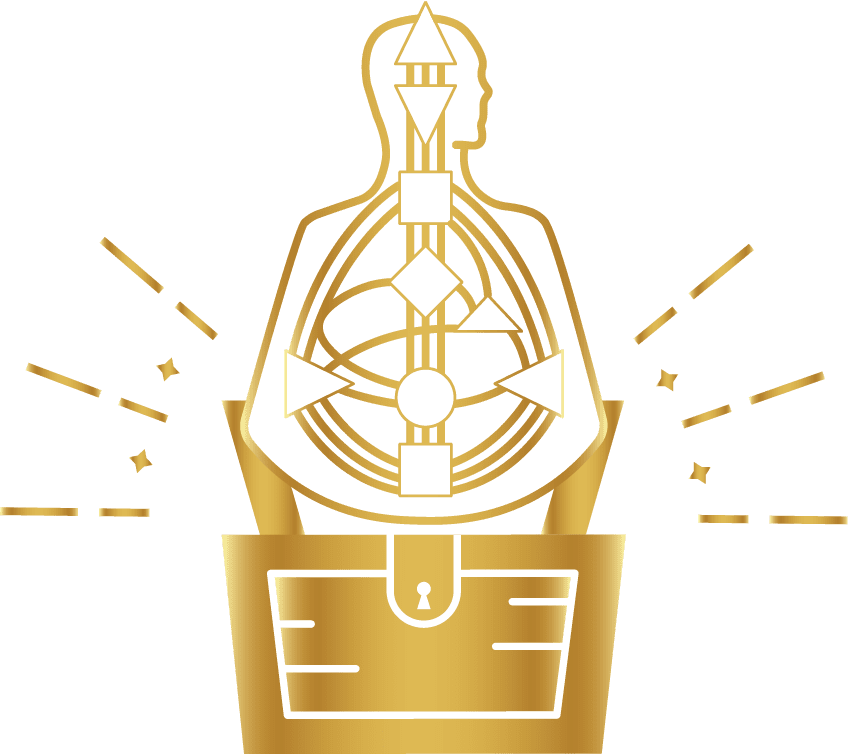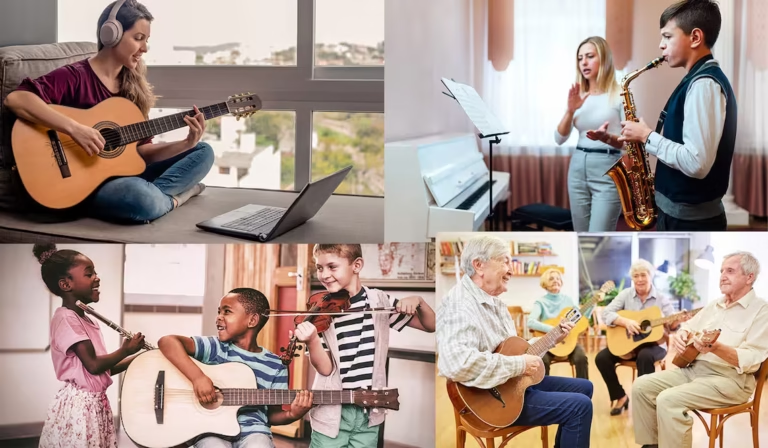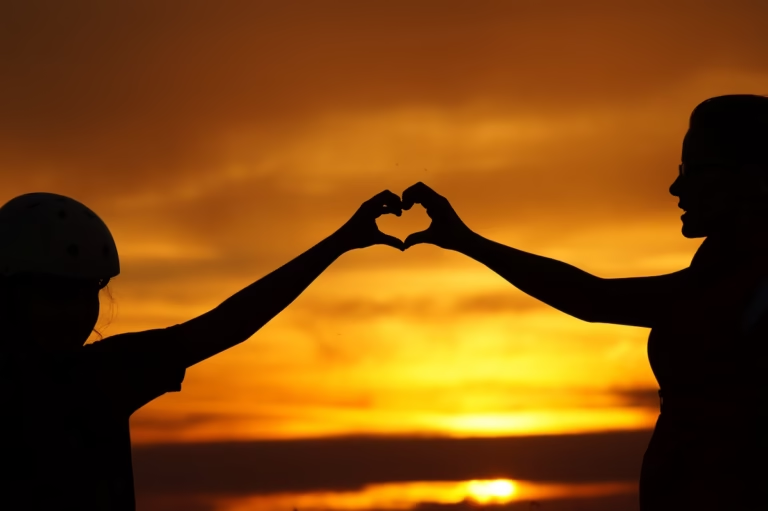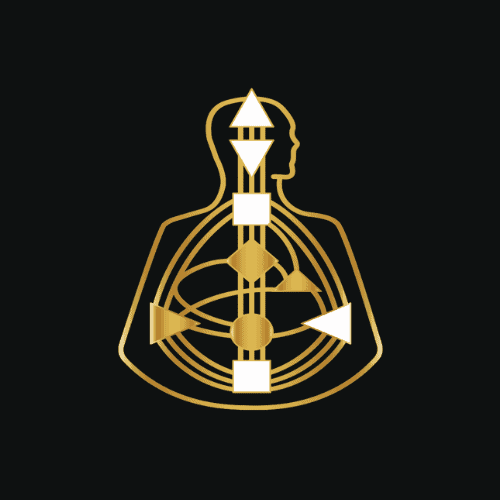The analysis of two individual charts overlaid makes it possible to observe the elements of Compatibility in Human Design. Have you ever wondered why you instantly click with one person, while another feels like they trigger a skin reaction? Sometimes the same sentence can be said ipsis verbis by two different people, and from one it feels loaded with an attacking energy, while from the other it flows naturally.
It’s no surprise that with certain people, conversations are like a tennis match—you hit the ball and the other person sends it right back. At the same time, we’ve all experienced what it’s like to try and talk to someone and have the conversation die on the spot, either because they don’t understand us or don’t even try. Occasionally, people enter our lives who, as if by magic, understand everything we say. It’s not by accident—nonverbal communication accounts for around 93% of our expression.
1 + 1 = 3
When we look at our Human Design chart, we notice that it contains various elements. With so many variables, the chances of one chart being identical to another are very low, because there are deeper layers that aren’t visible at first glance. (This is why even twins born minutes apart can have different elements in their design.) To truly analyze who we click with and who we don’t, it’s necessary to analyze a partnership. A Partnership is when we overlay two individual charts to create a third one. Human Design defies mathematical laws—1 + 1 = 3—because the merging of two energies creates a new energy in which the individual energies still exist.
With the overlay of all elements, if in chart A there are 5 defined centers and chart B has the other 4 defined centers, the combination of those two charts creates a new one with all centers defined (9-0). The theme here is “Nowhere to go.” This means that within this relationship, there’s very little room for a third element to enter. Have you ever noticed, at a dinner with several people, that two individuals seem unable to disconnect or let anyone else join their conversation? That’s exactly it. There’s no room for anyone else. If, on the other hand, the Partnership results in one undefined center (8-1), the theme becomes “Have a bit of fun.” The undefined center is where the two people can converge, learn, and have room to grow.
Similarly, if they share the same center, they recognize each other. If one has a center and the other does not, it may become a source of issues. Imagine one person has a defined Sacral center and their partner doesn’t. The person with the Sacral will expect the other to keep up and have energy for everything. But that’s not possible, not even if they’re amplifying and absorbing the Sacral energy, because as soon as they stop receiving it, they’re likely to collapse from exhaustion.
Another important point is Energy Type. If my Energy Type is Projector and the person I’m talking to is also a Projector, there are points of affinity that are mirrored and recognized because they are shared. We both need to manage our energy wisely since it isn’t infinite, and we both like to feel recognized. Does this mean that different Energy Types won’t get along? Of course not. But it does mean you need to know how each one operates and not everyone has that awareness.
A Projector might easily recognize and feel inspired by a Manifesting Generator who’s doing a thousand things at once, but they should acknowledge that keeping up would be very difficult. However, if the Manifesting Generator asks for help in something and values the Projector’s input, then of course the Projector can guide and help fix the steps the Generator skipped while moving at the speed of light.
We can also look at Profile to study compatibility with another person. By comparing each person’s Profile, we can recognize that when we share the same profile, there’s an instant connection. We share an archetype and understand how we each respond to different situations. If we both have a conscious Line 5, that urge to put on the superhero cape, to try and save the world and fix everything, becomes a common trait. If the affinity is also shared in the unconscious line, for example, Line 1, then we’ll both naturally give each other the space to dive deep, research, and study whatever topic happens to arise at the time.
Anyone who follows astrology is probably familiar with the terms North Node and South Node. The North Node shapes the life we begin to experience after the age of 40, while the South Node represents the themes we carry from past lives and that stay with us until we’re about 39. However, in Human Design, what we can observe here are our lines and affinities. If both people share the same line in an aspect, it means they’ll attract the same types of people. For example, if both have Line 3 in their North and South Nodes, life for both will be shaped by experiences with the people they meet.
Channels and Gates as Elements of Compatibility in Human Design
When the two charts are overlaid, we can identify if something might create friction. In Human Design, this is called a compromise and it occurs when one person has a full channel and the other only has one gate.


Let’s imagine Person A has channel 11‑56 in their design and is therefore excellent at creating content and telling stories. At work, Person A shares with Person B, who only has Gate 11 active, what they wrote. Person B will give their opinion, which is the theme of Gate 11 (Gate of Ideas and Opinions), and that opinion may be good or neutral. However, Person A already has the complete channel energetically and doesn’t need the other person’s opinion at all because everything is already included in their design. At first, Person B’s behavior might not bother Person A, but over time it will start to become a point of friction. Like everything in life, the most important thing is to be aware that this compromise exists so you can overcome those differences.
If there are elements that cause us irritation, there are also others that bring us together. Points of camaraderie happen when two people share the same channel. Sharing a channel brings something both recognize. The same applies when sharing the same gates in Human Design compatibility. When only one has the complete channel it’s called Domination, and it’s where we recognize in the other something we don’t have.
Finally, there are the Electromagnetics, which are as simple as they are beautiful to see and feel in your skin and body. Our active gates are also called Suspended Gates, because they are always calling the opposite gate, the Harmonious Gate, to complete the channel. It is something that pulls us and we don’t even know why.
The Compatibility Elements and Individual Conditioning
When we look at the Human Design of two people together and everything connects, all the colors shine—it’s like lighting up a Christmas tree. In this case, there is a chemical pattern present where two people are compatible and can play a very important role in each other’s lives. However, having too much energy together can also create a short circuit if there is no awareness. In short, what binds us together is the recognition of someone who understands us and feels the same as us, or admires us for what we have and can offer them. There is always a part of us that calls out to the other.
To observe the level of compatibility in Human Design, it takes more than overlaying two charts; it’s necessary to understand how 1 + 1 equals 3 and how that third energy can affect each individual’s conditioning. Human Design is a unique experience for each of us, and at different stages that experience can have different effects on those around us.

